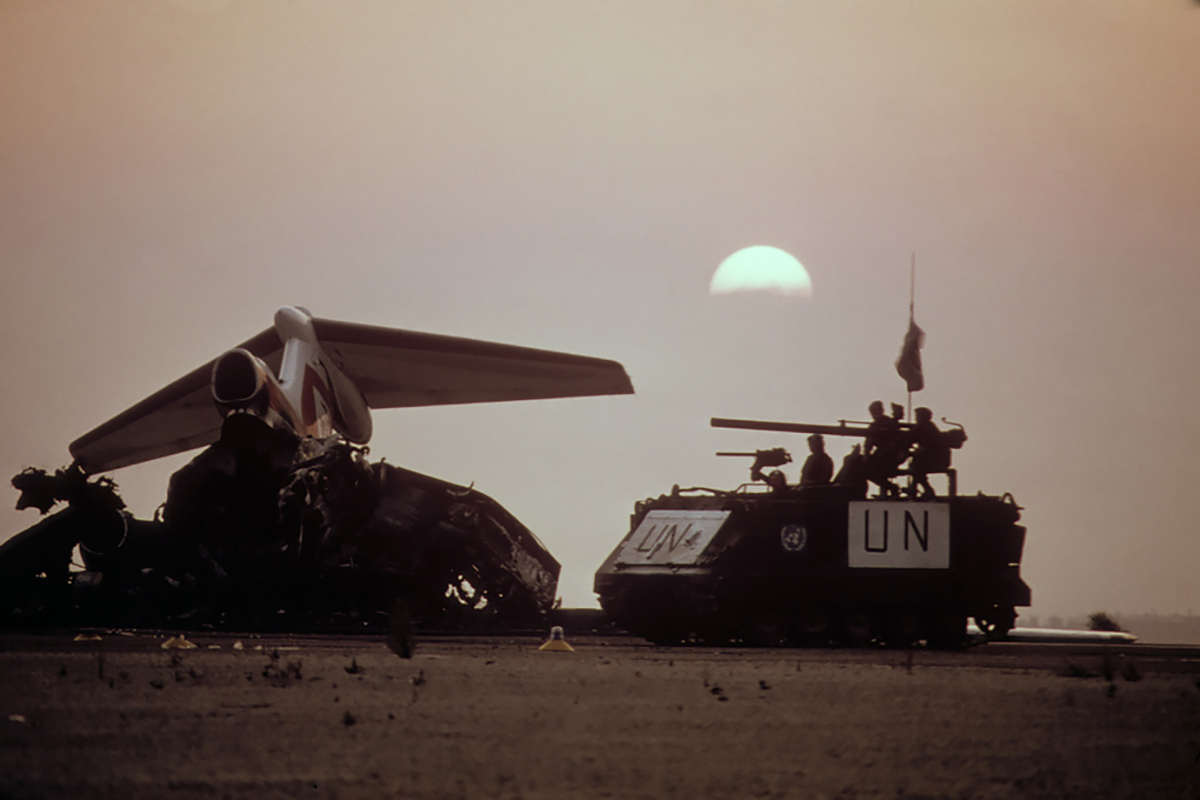It did not take long after Cyprus gained independence in 1960 for tensions to escalate between Greek and Turkish Cypriots, each favouring uniting with their home countries on the mainland.
An agreement to share power fell apart in 1963, and in 1964, the United Nations set up a peacekeeping force, which included Canadian troops, to keep a lid on hostilities under a ceasefire agreement. It was not an easy job, as the two ethnic communities settled into enclaves.
“Canadian soldiers needed both their traditional skills of soldiering and the skills of managing disagreements and conflicts between civilians,” says the Veterans Affairs Canada website.
The island was bisected along the Green Line, named for the colour of ink used on the map, separating the island into the Turkish Cypriot north and Greek Cypriot south.
On July 15, 1974, tension boiled over into violence as an attempted coup by the Greek Cypriot National Guard ousted the Greek Cypriot president.
Four days later, the part of the Green Line patrolled by Captain Alain Forand’s Canadian Airborne Regiment platoon was suspiciously quiet. By dawn, Turkey had invaded, dropping more than 1,000 troops into the area, with about 100 helicopters in the air and 11 warships offshore. The Turks were intent on capturing the airport in Nicosia, on Canadian peacekeepers’ turf. The Canadians became a target from both sides.
On July 23, a Turkish patrol seeking sanctuary made a Canadian observation post a target of the Greek Cypriots. Captain Normand Blaquière, carrying a flag and bullhorn, was fired on while escorting the Turks to safety. He was hit in the legs, and anyone who tried to get to him also came under fire.

A cenotaph in Nicosia, Cyprus, honours Canadian servicemen who lost their lives in peacekeeping missions. [MCpl Robert Bottrill, Canadian Forces Combat Camera]
Forand ordered covering fire, and then crawled into danger to help the wounded pair.
Privates J.M. Belley, J.G. Pelletier and Corporal J.R.M. Whelan braved the machine-gun fire to help drag Blaquière to safety, then returned with Forand to retrieve Plouffe.
Forand and Plouffe were awarded the Military Star of Courage. Whelan, Belley and Pelletier were awarded the Medal of Bravery.
By the end of the summer, two Airborne soldiers had been killed and 30 injured holding their ground against Turkish forces attempting to capture the airport and Greek Cypriots intent on expelling the Turks.
Advertisement























